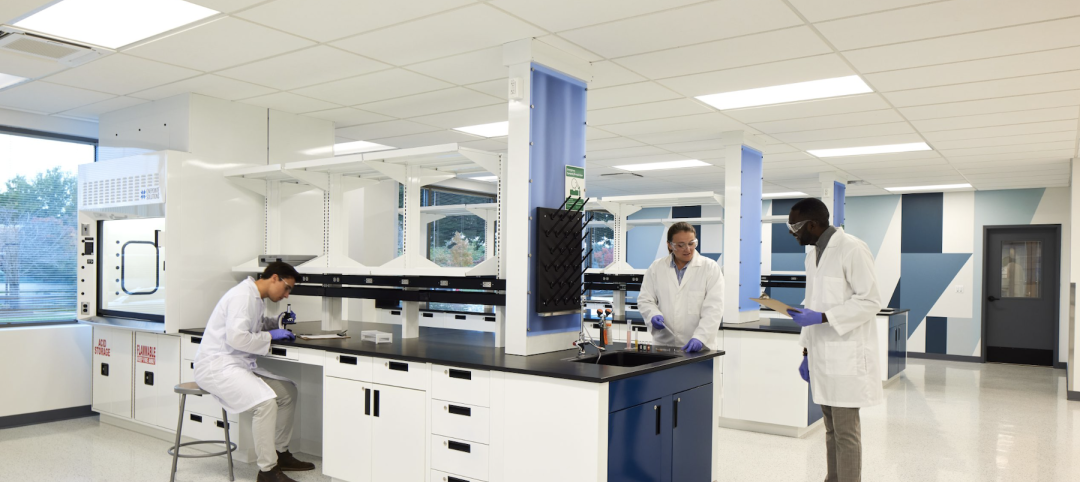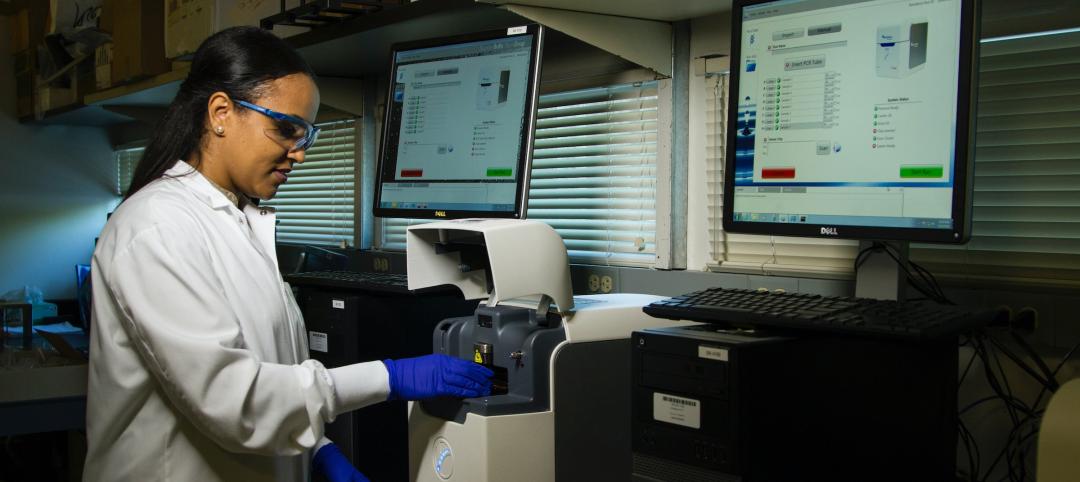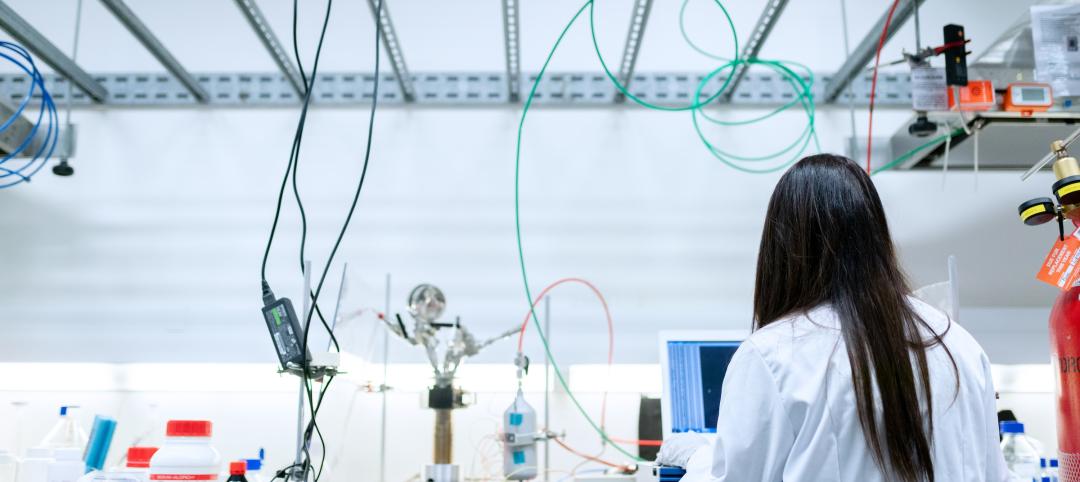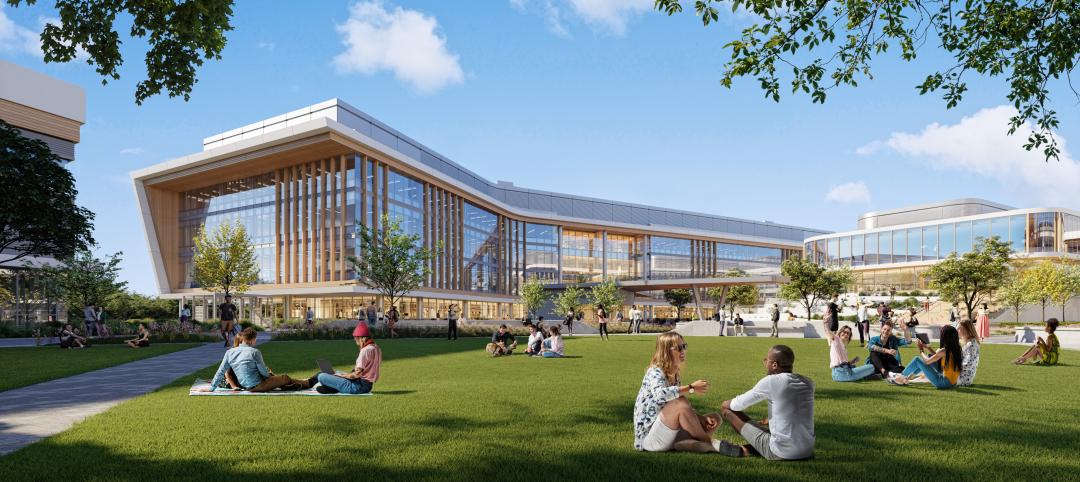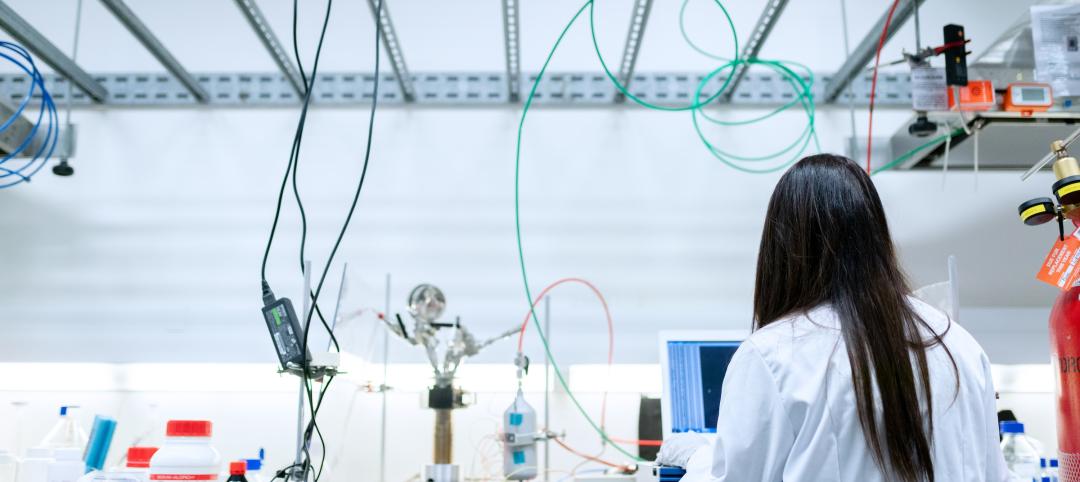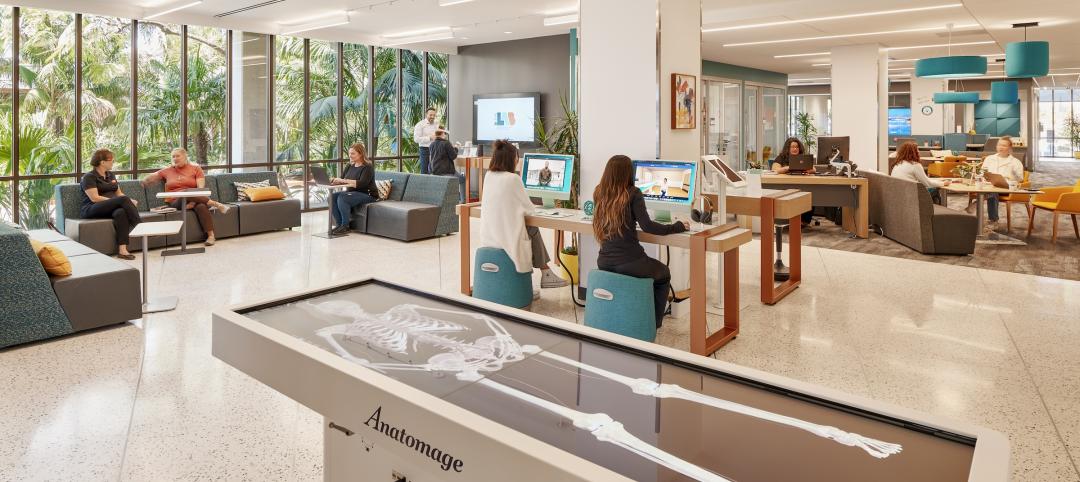Shorter research and development (R&D) timelines, ongoing cost pressures and sudden shifts in research priorities are driving new trends in lab design and location. Flexible space and access to talent are the keys to agile R&D, according to a new report from JLL, Journey to the next gen lab.
The average return on R&D investments among large biopharmaceutical firms has declined dramatically from 10.1% in 2010 to a paltry 3.2% in 2017. In the race for breakthrough innovations, companies are seeking collaboration and more flexible facilities.
“As a result of organizational cost pressures and a stronger focus on shortening the product lifecycle, R&D real estate is becoming multiuse,” says Roger Humphrey, Executive Managing Director and leader of JLL’s Life Sciences group. “The result is a drive toward highly flexible and attractive workplaces that appeal to not only scientific, but technical talent.”
Through interviews with executives at 15 leading biopharmaceutical and medical device companies, JLL has uncovered three trends pointing toward the future laboratory space.
1. Designing for flexibility and collaboration
Amidst rapidly shifting research priorities, scientists need space that can be easily reconfigured to accommodate different kinds of research and facilitate interaction with colleagues. Mobile benches and unassigned workspaces, for example, allow for fast changes in personnel and the type of work being performed. As one executive said, “Scientists want to have the flexibility that allows them to get their studies done as quickly as possible.”
“Behind the scenes, flexibility begins with infrastructure,” Humphrey said. “For example, you can hang retractable electrical cords from the ceiling so you’re not limited to placing equipment against a wall. You can build thick floor slabs into the laboratory corridors and hide technical infrastructure behind a façade so you can easily move people and equipment.”
2. Less wet lab, more computational science space
As R&D undergoes digital transformation, the science has become increasingly integrated with data and analytics. Once the dominant space for life sciences research, wet labs are shrinking while flex space and office space for computational science are growing as scientists spend more time analyzing data.
“A traditional R&D facility would consist of mostly lab space and a small proportion of office,” Humphrey said. “In a few years, those proportions will likely shift to equal parts web labs, flex space and office space for the data scientists.”
3. A focus on talent recruitment and retention
As illustrated in JLL’s annual Life Sciences Outlook report, biopharmaceutical companies have intensified their drive to be near leading academic research centers and the supportive R&D ecosystems that surround them. Despite high rents, cities like San Francisco, San Diego and Boston continue to attract leading companies that want access to resources and talent—including both laboratory scientists and the data scientists needed to work with today’s voluminous data.
The need for talent is also driving a growing focus on amenities, aesthetic appeal, state-of-the-art equipment and attention to sustainable design. Rather than hiding R&D space deep inside a facility, some biopharmaceutical companies are creating lab spaces on the perimeters of their facilities to showcase their cutting-edge technologies and abundance of natural light.
“We’re seeing a growing trend toward creating engaging, attractive labs and office workplaces,” Humphrey said. “The goal is to inspire creativity and foster well-being, with natural light, rich amenities and comfortable places for formal or informal collaboration.”
Related Stories
Healthcare Facilities | Jan 7, 2024
Two new projects could be economic catalysts for a central New Jersey city
A Cancer Center and Innovation district are under construction and expected to start opening in 2025 in New Brunswick.
Laboratories | Jan 5, 2024
Office conversions are helping to meet the growing demand for life-science space
Ware Malcomb and Rock Creek Property Group led the team that recently completed the adaptive reuse of two office buildings in Maryland.
Mass Timber | Jan 2, 2024
5 ways mass timber will reshape the design of life sciences facilities
Here are five reasons why it has become increasingly evident that mass timber is ready to shape the future of laboratory spaces.
Giants 400 | Nov 28, 2023
Top 55 Laboratory Construction Firms for 2023
Whiting-Turner, DPR Construction, STO Building Group, Skanska, and Hensel Phelps top BD+C's ranking of the nation's largest laboratory general contractors and construction management (CM) firms for 2023, as reported in Building Design+Construction's 2023 Giants 400 Report.
Giants 400 | Nov 28, 2023
Top 60 Laboratory Engineering Firms for 2023
Jacobs, Affiliated Engineers, Burns & McDonnell, Tetra Tech, and WSP head BD+C's ranking of the nation's largest laboratory engineering and engineering/architecture (EA) firms for 2023, as reported in Building Design+Construction's 2023 Giants 400 Report.
Giants 400 | Nov 28, 2023
Top 100 Laboratory Design Firms for 2023
HDR, Flad Architects, DGA, Elkus Manfredi Architects, and Gensler top BD+C's ranking of the nation's largest laboratory architecture and architecture/engineering (AE) firms for 2023, as reported in Building Design+Construction's 2023 Giants 400 Report.
Giants 400 | Nov 16, 2023
Top 80 Science + Technology Facility Construction Firms for 2023
DPR Construction, Austin Industries, Whiting-Turner, and Gilbane top BD+C's ranking of the nation's largest science and technology (S+T) facility general contractors and construction management (CM) firms for 2023, as reported in Building Design+Construction's 2023 Giants 400 Report. Note: This ranking factors revenue from all science and technology (S+T) buildings work, including laboratories, research buildings, technology/innovation buildings, pharmaceutical production facilities, and semiconductor production facilities.
Giants 400 | Nov 16, 2023
Top 70 Science + Technology Facility Engineering Firms for 2023
Jacobs, Fluor, SSOE, Tetra Tech, and Affiliated Engineers head BD+C's ranking of the nation's largest science and technology (S+T) facility engineering and engineering/architecture (EA) firms for 2023, as reported in Building Design+Construction's 2023 Giants 400 Report. Note: This ranking factors revenue from all science and technology (S+T) buildings work, including laboratories, research buildings, technology/innovation buildings, pharmaceutical production facilities, and semiconductor production facilities.
Giants 400 | Nov 16, 2023
Top 100 Science + Technology Facility Architecture Firms for 2023
Gensler, HDR, Page Southerland Page, Flad Architects, and DGA top BD+C's ranking of the nation's largest science and technology (S+T) facility architecture and architecture/engineering (AE) firms for 2023, as reported in Building Design+Construction's 2023 Giants 400 Report. Note: This ranking factors revenue from all science and technology (S+T) buildings work, including laboratories, research buildings, technology/innovation buildings, pharmaceutical production facilities, and semiconductor production facilities.
Laboratories | Nov 8, 2023
Boston’s FORUM building to support cutting-edge life sciences research and development
Global real estate companies Lendlease and Ivanhoé Cambridge recently announced the topping-out of FORUM, a nine-story, 350,000-sf life science building in Boston. Located in Boston Landing, a 15-acre mixed-use community, the $545 million project will achieve operational net zero carbon upon completion in 2024.




